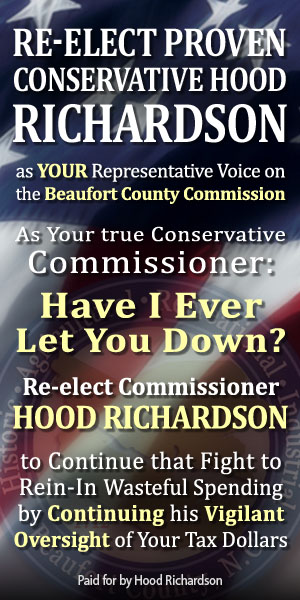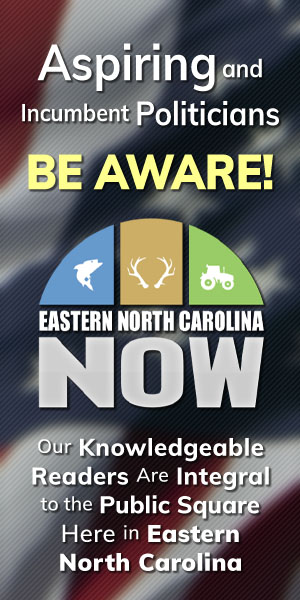Stewards of the Visual Exposition
Educrats Could Use Some Humility
Publisher's Note: This post appears here courtesy of the John Locke Foundation. The author of this post is Brian Balfour.
A lack of humility and introspection has been the downfall of many a person or organization. A refusal to at least consider that internal changes are needed to inspire improvement has a strong correlation with repeating mistakes and impeding progress.
Such a lack of humility can be found among public school advocates such as the NCAE (North Carolina Association of Educators) leadership, left-wing activist groups, and politicians wanting to deny North Carolina families any meaningful educational choice.
The only reason they will ever consider for poor educational results in North Carolina's public schools is lack of money.
Schools are "underfunded," no matter how much they get, they'll insist. The status quo of how the institution of public schools is set up, run, and administered is flawless. They just need more money.
They would never pause for a moment to consider that a monopolistic institution largely shielded from competition deriving its revenue from taxpayers by force and administered by government bureaucrats isn't the best system for efficient use of resources or producing high quality student outcomes.
Maybe it's not the amount of money they receive, but how it's spent - but that possibility is unworthy of even a moment's reflection to them.
But consider this: In the 20 years from 1999 to 2019, national per-student public education spending virtually doubled, rising by 99%, nearly twice the pace of inflation.
What was done with that windfall?
From 2000 to 2019, the growth of administrative staff outpaced the increase in students - and teachers - by a whopping 11-to-1 ratio. Administrators also grew at well over twice the pace of principals and assistant principals.
A rise in administrative bureaucrats is an inevitable feature of government programs. The incentive to economize on inputs and increase productivity in order to compete for consumer dollars is replaced by an incentive to increase inputs and create make-work jobs. But educrats can't, and won't, be bothered to reckon with such realities. Instead, they'll continue to insist on more money, just never you mind how it's being spent.

Dating back still further, the chart below shows how total national K-12 spending per student - adjusted for inflation - exploded by 200% between 1970 and 2010, while National Assessment of Educational Progress (NAEP) scores in three main subject areas remained flat.

No matter how many of such charts are presented, however, the status-quo defenders will continue to blame insufficient funds for flat and disappointing student outcomes.
According to FY 2021-22 test results, only about half of students in grades 3 thru 8 can read at grade level. North Carolina public schools in that year spent more than $12,300 per student.
How much should it cost to teach a child to read? The only answer you'll ever get from the government educational complex is "more."
Interestingly, some of the most dismal proficiency rates occurred in counties receiving well above the state average in funding. Halifax County, for example, spent an average of nearly $14,700 per student, yet only 17.2% of elementary and middle school students were proficient in math, and fewer than one in four were proficient in reading.
Yet the education denialists will continue to insist lack of money is the only "problem" needing to be fixed.
Perhaps the queen of denialism is NCAE President Tamika Walker Kelly, who in March 2021 infamously tweeted that learning loss from Covid school lockdowns was a "false construct."
She insisted in making the absurd claim in the face of research showing that student proficiency, especially for girls and black males, suffered dramatically after school lockdowns.
Not only will they not even consider any shortcomings in the public education system - other than "lack of funds" - but they can't admit to the academic damage done by closing classroom doors for about a year. The lack of humility, remorse, or inner reflection runs deep.
In the 2022 North Carolina Teacher Working Conditions Survey, only 8% of respondents selected "facilities and resources" as the primary factor that might cause them to leave the profession. Close to 90% said they have sufficient access to resources like computers, other forms of digital technology, copy machines, and classroom supplies like papers and pens.
Conversely, one-third cited "school leadership" as the leading factor that might drive them from the profession, followed by about one in eight who cited "time during the workday." Bureaucratic bloat that manifests in poor leadership and unneeded time commitments creates far greater teacher frustration than any lack of resources.
Finally, school choice opponents who lack the humility to examine any institutional shortcomings of public schools like to attack private schools as "unaccountable." But to whom are traditional public schools accountable? Bureaucrats? Politicians? Certainly not students or parents, because they have little to no choice other than to attend their assigned district school.
Moreover, rather than looking inward for reasons why parents and children would desire school choice options, they just double down on the "we need more money" argument and claim that school choice programs will starve public schools of funding.
Of course, admitting that money might not be the sole cause of poor performance would hamper the power base of the teacher's union bosses. Keeping the taxpayer dollars flowing into the public schools means more administrators and personnel being hired, which means more potential union members, which translates into more union dues flowing into the union boss' coffers. Those union dues then flow to politicians promising to keep the money spigots flowing, and the cycle continues.
Like any other government program, traditional public schools suffer from poor incentives, administrative bloat, a lack of true accountability, and stifling bureaucracy. The first step in self-improvement is admitting one has a problem. Unfortunately, the educrats lack the humility to do so.
Go Back
- Refusing to look inward, opponents of school choice insist the only thing needed to improve public schools is more money
- Over the past several decades, however, public schools have received major increases in funding with no corresponding improvement in results
- If true improvement is to be made, some inner reflection is needed
A lack of humility and introspection has been the downfall of many a person or organization. A refusal to at least consider that internal changes are needed to inspire improvement has a strong correlation with repeating mistakes and impeding progress.
Such a lack of humility can be found among public school advocates such as the NCAE (North Carolina Association of Educators) leadership, left-wing activist groups, and politicians wanting to deny North Carolina families any meaningful educational choice.
The only reason they will ever consider for poor educational results in North Carolina's public schools is lack of money.
Schools are "underfunded," no matter how much they get, they'll insist. The status quo of how the institution of public schools is set up, run, and administered is flawless. They just need more money.
They would never pause for a moment to consider that a monopolistic institution largely shielded from competition deriving its revenue from taxpayers by force and administered by government bureaucrats isn't the best system for efficient use of resources or producing high quality student outcomes.
Maybe it's not the amount of money they receive, but how it's spent - but that possibility is unworthy of even a moment's reflection to them.
But consider this: In the 20 years from 1999 to 2019, national per-student public education spending virtually doubled, rising by 99%, nearly twice the pace of inflation.
What was done with that windfall?
From 2000 to 2019, the growth of administrative staff outpaced the increase in students - and teachers - by a whopping 11-to-1 ratio. Administrators also grew at well over twice the pace of principals and assistant principals.
A rise in administrative bureaucrats is an inevitable feature of government programs. The incentive to economize on inputs and increase productivity in order to compete for consumer dollars is replaced by an incentive to increase inputs and create make-work jobs. But educrats can't, and won't, be bothered to reckon with such realities. Instead, they'll continue to insist on more money, just never you mind how it's being spent.

Dating back still further, the chart below shows how total national K-12 spending per student - adjusted for inflation - exploded by 200% between 1970 and 2010, while National Assessment of Educational Progress (NAEP) scores in three main subject areas remained flat.

No matter how many of such charts are presented, however, the status-quo defenders will continue to blame insufficient funds for flat and disappointing student outcomes.
According to FY 2021-22 test results, only about half of students in grades 3 thru 8 can read at grade level. North Carolina public schools in that year spent more than $12,300 per student.
How much should it cost to teach a child to read? The only answer you'll ever get from the government educational complex is "more."
Interestingly, some of the most dismal proficiency rates occurred in counties receiving well above the state average in funding. Halifax County, for example, spent an average of nearly $14,700 per student, yet only 17.2% of elementary and middle school students were proficient in math, and fewer than one in four were proficient in reading.
Yet the education denialists will continue to insist lack of money is the only "problem" needing to be fixed.
Perhaps the queen of denialism is NCAE President Tamika Walker Kelly, who in March 2021 infamously tweeted that learning loss from Covid school lockdowns was a "false construct."
She insisted in making the absurd claim in the face of research showing that student proficiency, especially for girls and black males, suffered dramatically after school lockdowns.
Not only will they not even consider any shortcomings in the public education system - other than "lack of funds" - but they can't admit to the academic damage done by closing classroom doors for about a year. The lack of humility, remorse, or inner reflection runs deep.
In the 2022 North Carolina Teacher Working Conditions Survey, only 8% of respondents selected "facilities and resources" as the primary factor that might cause them to leave the profession. Close to 90% said they have sufficient access to resources like computers, other forms of digital technology, copy machines, and classroom supplies like papers and pens.
Conversely, one-third cited "school leadership" as the leading factor that might drive them from the profession, followed by about one in eight who cited "time during the workday." Bureaucratic bloat that manifests in poor leadership and unneeded time commitments creates far greater teacher frustration than any lack of resources.
Finally, school choice opponents who lack the humility to examine any institutional shortcomings of public schools like to attack private schools as "unaccountable." But to whom are traditional public schools accountable? Bureaucrats? Politicians? Certainly not students or parents, because they have little to no choice other than to attend their assigned district school.
Moreover, rather than looking inward for reasons why parents and children would desire school choice options, they just double down on the "we need more money" argument and claim that school choice programs will starve public schools of funding.
Of course, admitting that money might not be the sole cause of poor performance would hamper the power base of the teacher's union bosses. Keeping the taxpayer dollars flowing into the public schools means more administrators and personnel being hired, which means more potential union members, which translates into more union dues flowing into the union boss' coffers. Those union dues then flow to politicians promising to keep the money spigots flowing, and the cycle continues.
Like any other government program, traditional public schools suffer from poor incentives, administrative bloat, a lack of true accountability, and stifling bureaucracy. The first step in self-improvement is admitting one has a problem. Unfortunately, the educrats lack the humility to do so.





















